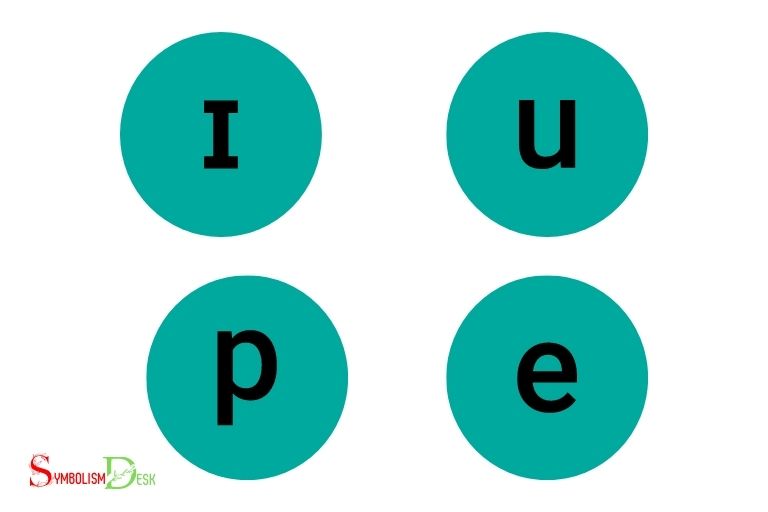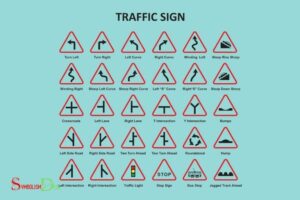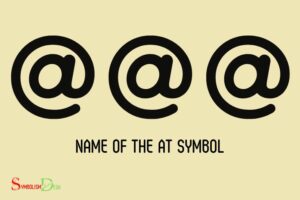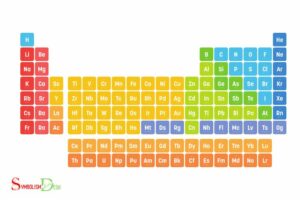English Symbols And Their Names: Complete List!
English symbols and their names refer to the various types of punctuation marks, typographical signs, and mathematical symbols that are commonly used in the English language.
These include full stop (.), comma (,), question mark (?), exclamation point (!), quotation marks (“ ”), parentheses ( ), and many more.
These symbols play a crucial role in written communication, helping to structure the text, indicate pauses and intonations, represent different mathematical or logical operations, and convey specific meanings.
Understanding and using them correctly can enhance the clarity and precision of your writing.
Recognizing and utilizing English symbols properly is a vital part of mastering the language. These symbols not only improve the structure and flow of your content but also help you communicate more effectively.
Moreover, the incorrect use of these symbols can lead to misunderstandings and confusion, demonstrating the importance of their proper application.
31 English Symbols And Their Names
| Symbol | Name |
|---|---|
| ! | Exclamation mark |
| “ | Quotation mark |
| # | Number sign (Hash) |
| $ | Dollar sign |
| % | Percent sign |
| & | Ampersand |
| ‘ | Apostrophe |
| ( | Left parenthesis |
| ) | Right parenthesis |
| * | Asterisk |
| + | Plus sign |
| , | Comma |
| – | Hyphen (minus) |
| . | Period (full stop) |
| / | Slash (forward slash) |
| : | Colon |
| ; | Semicolon |
| < | Less than sign |
| = | Equal sign |
| > | Greater than sign |
| ? | Question mark |
| @ | At symbol |
| [ | Left square bracket |
| \ | Backslash |
| ] | Right square bracket |
| ^ | Caret |
| _ | Underscore |
| ` | Grave accent |
| { | Left curly brace |
| } | Right curly brace |
| ~ | Tilde |
Key Takeaway

Five Facts About English Symbols and their names
The Alphabet Symbols
Explanation Of The English Alphabet And Its Symbols
The english alphabet consists of 26 symbols that represent sounds and letters. The symbols include 21 consonants and 5 vowels. These symbols are used in various combinations to form words.
The alphabet symbols are represented in both uppercase and lowercase forms. When written in uppercase, they are referred to as capital letters, and when written in lowercase, they are represented as small letters.
A Brief History Of The English Alphabet
The history of the english alphabet dates back to ancient rome, where it was formed from a combination of etruscan and latin scripts.
The english alphabet has undergone several modifications over the years, including the addition of new symbols and the standardization of its spelling.
The alphabet that we know and use today has its roots in the roman script, which was introduced to britain in the 5th century. Over time, new symbols were added to the original 21, including j, u, and w in the 16th century.
Importance Of Each Letter Of The Alphabet
Each letter of the english alphabet has its own unique significance. A few of them are:
- A: The first letter in the alphabet and a vowel that represents the sound “ah”.
- E: The second vowel in the alphabet, representing the sound “eh”.
- P: A consonant that represents the sound “p”.
- T: A consonant that represents the sound “t”.
- Z: A consonant that represents the sound “z”.
All the 26 letters of the alphabet are vital in the english language, and their importance cannot be overstated.
The english alphabet and its symbols are essential aspects of the language. Understanding their significance can help to improve communication and writing skills. So, let’s keep practicing until we master them!
Punctuation Symbols
English Symbols And Their Names: Punctuation Symbols
Punctuation marks are essential in written english to indicate the intended tone, emphasis, and mood of the sentences.
A piece of writing without proper punctuation can be hard to read, and its meaning can change entirely.
In this section, we will explore the different punctuation marks in the english language, their history, and correct usage.
Explanation Of The Different Punctuation Marks Used In English
Punctuation marks are symbols used in written english to indicate how a sentence should be read and understood.
These marks, when used correctly, can help to convey the tone, emphasis, and intended meaning of a sentence.
Below are some of the essential punctuation marks used in english:
History And Evolution Of Punctuation Symbols In The English Language
Punctuation marks have been used in various forms since the introduction of writing. The ancient greeks and romans used punctuation marks in their manuscripts, but it was not until the middle ages that standardized punctuation marks were developed.
During the 16th and 17th centuries, punctuation marks began to be standardized, and modern forms emerged during the 18th century.
Today, the use of punctuation marks has become an essential aspect of the english language.
Explanation Of The Correct Usage Of Punctuation Marks
Using punctuation marks correctly can make a significant difference in how a sentence is understood.
Below are some of the essential rules for punctuation usage in english:
- Use a comma to separate items in a list.
- Use a full stop/period at the end of a sentence.
- Use a question mark to indicate a question.
- Use an exclamation mark to express strong emotion or emphasis.
- Use a colon to introduce a list, explanation, or example.
- Use a semicolon to separate two independent clauses.
- Use quotation marks to indicate a direct quote or dialogue.
- Use an apostrophe to show possession or contraction.
- Use a dash to indicate a break in thought, to emphasize a point or to show an interruption.
- Use parentheses to add additional information to a sentence.
Punctuation marks play an essential role in written english and are crucial to conveying the meaning of a sentence.
Proper usage of punctuation marks can help make writing clear, concise, and easy to understand.
By using the rules mentioned above, writers can ensure that their writing is effective and reader-friendly.
Number Symbols
English Symbols And Their Names: Number Symbols
Numbers are an essential part of the english language, and they are represented by symbols that are used to perform a range of functions.
We will be discussing the various number symbols used in the english language, the importance of these symbols and their usage, as well as how these symbols have evolved over time.
Introduction To The Different Number Symbols In The English Language
Number symbols are the characters that represent numerical values in the english language.
There are a variety of symbols that represent different numerical values, and some of these symbols include:
- 0, 1, 2, 3, 4, 5, 6, 7, 8, 9
- + (plus)
- – (minus)
- / (division)
- X or (multiplication)
- = (equals)
- . (decimal point)
Importance Of Number Symbols And Their Usage In The English Language
Number symbols are vital for performing mathematical operations and are used in a range of fields, such as science, finance, and engineering.
These symbols are also necessary for representing dates, times, and measurements in various formats.
Number symbols are used in everyday life, from calculating bills and measuring ingredients to tracking time and temperature.
An Overview Of The History And Evolution Of Number Symbols In English
The evolution of number symbols is an exciting area of research, as it involves tracing the development of numerical systems over time and across cultures.
The earliest known number symbols date back to ancient civilizations, such as the babylonians and egyptians, who used symbols to represent quantities.
The indian numerical system, which uses nine numerical digits and a zero, was introduced to the western world by arabian mathematicians during the middle ages and eventually became the basis of the modern european numeric system.
Over time, new symbols were added to the numeric system, including the decimal point and the addition, subtraction, multiplication, and division symbols.
Number symbols are an integral part of the english language, and they facilitate communication and understanding across various fields.
From ancient civilizations to modern times, number symbols have evolved to suit the needs of society and continue to be essential for problem-solving and performing calculations.
Other Significant Symbols In English
Overview Of Other Significant Symbols In The English Language, Such As Currency Symbols, Mathematical Symbols, And Others
English language is not only rich with words, but it is also full of symbols. These symbols add essence to the way we communicate in english.
Currency symbols, mathematical symbols, and other significant symbols in the english language are essential to understand.
They are useful not only in daily life but also in scientific and financial areas.
Currency Symbols
Currency symbols represent the currencies used in different countries around the world.
Here are some examples:
- Dollar sign ($): This symbol is used for the u.s. dollar, australian dollar, canadian dollar, and others.
- Euro sign (€): This is the currency symbol for the euro which is used in european union countries.
- Pound sign (£): This sign represents the currency used in the united kingdom.
Mathematical Symbols
Mathematical symbols are essential to know for people who deal with numbers, calculations, and equations.
Here are some of the commonly used mathematical symbols in english:
- Plus sign (+): It represents addition.
- Minus sign (-): It represents subtraction.
- Multiplication sign (×): It represents multiplication.
- Division sign (÷): It represents division.
Other Significant Symbols
Besides currency and mathematical symbols, there are several other symbols which are widely used in english.
Some of these symbols are:
- At sign (@): It is used to represent the word “at” in email addresses, social media accounts, and other online platforms.
- Hashtag (#): Hashtags are commonly used on social media platforms to highlight the main topic or keyword of a post.
- Ampersand (&): It is used to represent the word “and”.
Historical Context And Origin Of Each Symbol
The origin of symbols in the english language dates back to ancient times. They have evolved over time and have been adapted to suit the needs of modern-day usage.
Here are some examples:
- The dollar sign ($): The origin of the dollar sign can be traced back to the 16th century when the mexican peso was used in the united states. The dollar sign is said to be derived from the spanish peso symbol “ps”.
- The plus sign (+): The plus sign is derived from the latin word “et”, which means “and”.
- The ampersand (&): The ampersand symbol has its origin in the latin language. It came from the combination of the letters “e” and “t” (et) which means “and” in latin.
Examples Of The Usage Of Each Symbol In English Vocabulary
Knowledge and usage of symbols in english vocabulary can enhance written and oral communication.
Here are some prime examples:
- Currency symbols: “i would like to withdraw $200 from the bank.”
- Mathematical symbols: “the answer to the equation 5+2 is 7.”
- Other significant symbols: “please send me an email at [email protected].” Or “i love #traveling.”
Understanding symbols and their names in english vocabulary is essential to effectively communicate, especially in scientific and financial areas. These symbols often convey complex information in a concise manner, making them invaluable tools across various disciplines. For instance, understanding a mechanical engineering symbols list is crucial for engineers to accurately interpret technical drawings and specifications. Mastery of these symbols not only improves clarity but also ensures precision and efficiency in professional communication.
Currency symbols such as the dollar sign, mathematical symbols like plus, minus, multiplication, and division signs, and other symbols including at sign, hashtag, and ampersand have been widely used in various contexts to represent different meanings.
Remember that symbols add depth to your language, and it’s essential to have a good understanding of them.
Does Anjali Mudra Have an English Name?
Anjali Mudra, a popular hand gesture used in yoga and meditation, does not have a specific English name. In this disciple symbol names guide, it is referred to as Anjali Mudra, symbolizing respect, gratitude, and offering.
FAQ Of English Symbols And Their Names
What Are English Symbols?
English symbols refer to characters used in the english language, including letters, numbers, and punctuation marks.
How Many Letters Are In The English Alphabet?
There are 26 letters in the english alphabet, consisting of 21 consonants and 5 vowels.
What Are Some Common English Punctuation Marks?
Some common english punctuation marks include the period, comma, question mark, exclamation mark, and semicolon.
What Are The Names Of The English Vowels?
The names of the english vowels are a, e, i, o, and u.
What Are Some Examples Of English Symbols Used In Writing?
Examples of english symbols used in writing include letters to form words, numbers to represent quantities, and punctuation marks to indicate grammatical structure.
Conclusion
As we conclude this post, it becomes clear that english symbols play a vital role in communication and language.
From the alphabet to punctuation marks, these symbols are what make english a unique and dynamic language.
Their names may seem insignificant, but they contribute to the building blocks of effective communication and understanding.
As we continue to evolve as a society, it is essential to recognize the significance of these symbols and their names. Knowing them can help us navigate any situation where language plays an important role. In addition, being familiar with these symbols and their names can also foster a sense of cultural understanding and appreciation. For example, knowing the significance of “little pony names” in certain communities can demonstrate a respect for their traditions and heritage. Furthermore, having this knowledge can promote better communication and foster stronger relationships with people from diverse backgrounds.
As a content writer, it is vital to understand the symbolism and its names, so we can effectively convey messages and ideas.
Let us continue to learn and use english symbols accurately for a more effective and efficient communication experience.






